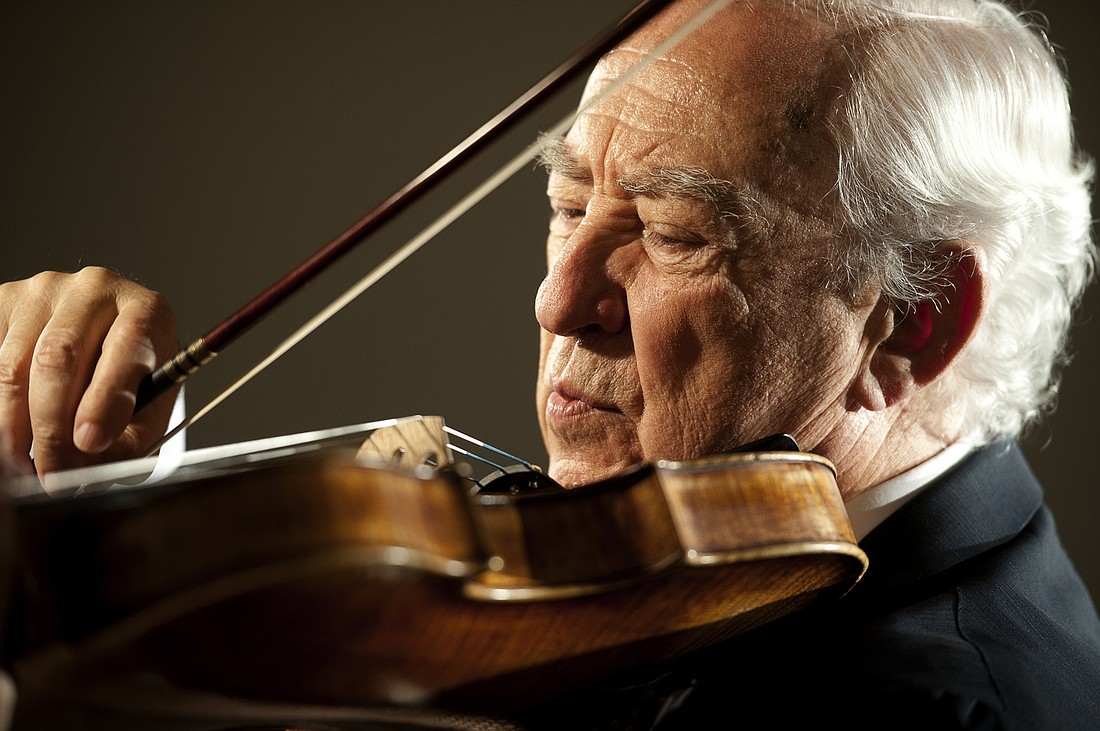- March 13, 2025
-
-
Loading

Loading

The 33rd season of La Musica International Chamber Music Festival was brought to an end by an absolutely transcendent performance of Schoenberg’s “Verklärte Nacht” (Transfigured Night). This work was presented in the original version for string sextet, with Federico Agostini and Marta Kowalczyk, violins, Bruno Giuranna and Daniel Palmizio, violas, and Dmitri Atapine and Christine J. Lee, cellos. It was a stunning performance in every way.
This seminal work by Schoenberg, situated at the very cusp of the divide between Post-Wagnerian, Post-Romantic and the Atonal Expressionism of the Second Viennese School, has the composer venturing through passages of lush romantic sounds and reaching for new expressions in which there is really no tonal center.
What results is a kaleidoscope of musical emotions, lightly based on the five verses of Richard Dehmel’s poem of the same name, which Schoenberg said gave him a great creative stimulus to compose. Starting with a simple motive-like theme that is passed from instrument to instrument, constantly shifting in shapes and supporting harmonies, the work seldom, if ever, reaches any moment of real musical repose. This is much in the vein of “Tristan and Isolde,” Wagner’s epic opera in which the musical phrases continue to rise and fall in intensity, avoiding any real resolution until the final chord.
In spite of all these words, this composition must be heard and experienced to receive its full impact.
Each of the six players involved was in the best of form, and in the ensemble, nuance and constant flow of musical ideas was both challenging and comforting.
Its placement in the festival programming was ideal, for there was really no way to follow that performance.
However, there was a first half to the evening’s concert. It opened with Mozart’s delightful Quartet for Piano and Strings # 2 in E flat major, K.493, performed by musicians Kowalczyk, Palmizio, Atapine and the festival’s Associate Artistic Director Derek Han. Written in 1786, barely a month after he completed his opera “The Marriage of Figaro,” the piano part is more prominently featured than in his earlier quartet, probably because Mozart wanted to perform the work himself, rather than use another pianist.
Han and the string players gave a most convincing performance, playing with more finesse and ensemble than in earlier outings, and the Rondo of the final movement was especially enjoyable.
Amy Beach, known as Mrs. H. H. A. Beach until the death of her husband, had her musical genius constantly thwarted solely due to the defined role of women at that time. Following the death of her husband in 1910, she became more active as a pianist and composer and is known as one of our first successful female composers.
Beach’s Trio for Violin, Cello and Piano, performed by Ruth Lenz, violin, Lee and Han, cello and piano, was romantic from start to finish. Beginning with wave-like arpeggios in the piano, the lush main theme was introduced by Lee’s cello, then passed through the other voices. In the second and third movements, she based her themes on some of her earlier songs, a course she followed in several other works. The finale begins with a percussive ostinato figure in the piano, complementing the theme in violin and cello, and after a lovely legato interlude, the ostinato figure returns for a striking conclusion.
Then after the intermission was that wonderful performance of “Verklärte Nacht,” which ended this year’s festival on a triumphant note, once again proving the musical prowess of these fine players. It was indeed a “Transfigured Night.”